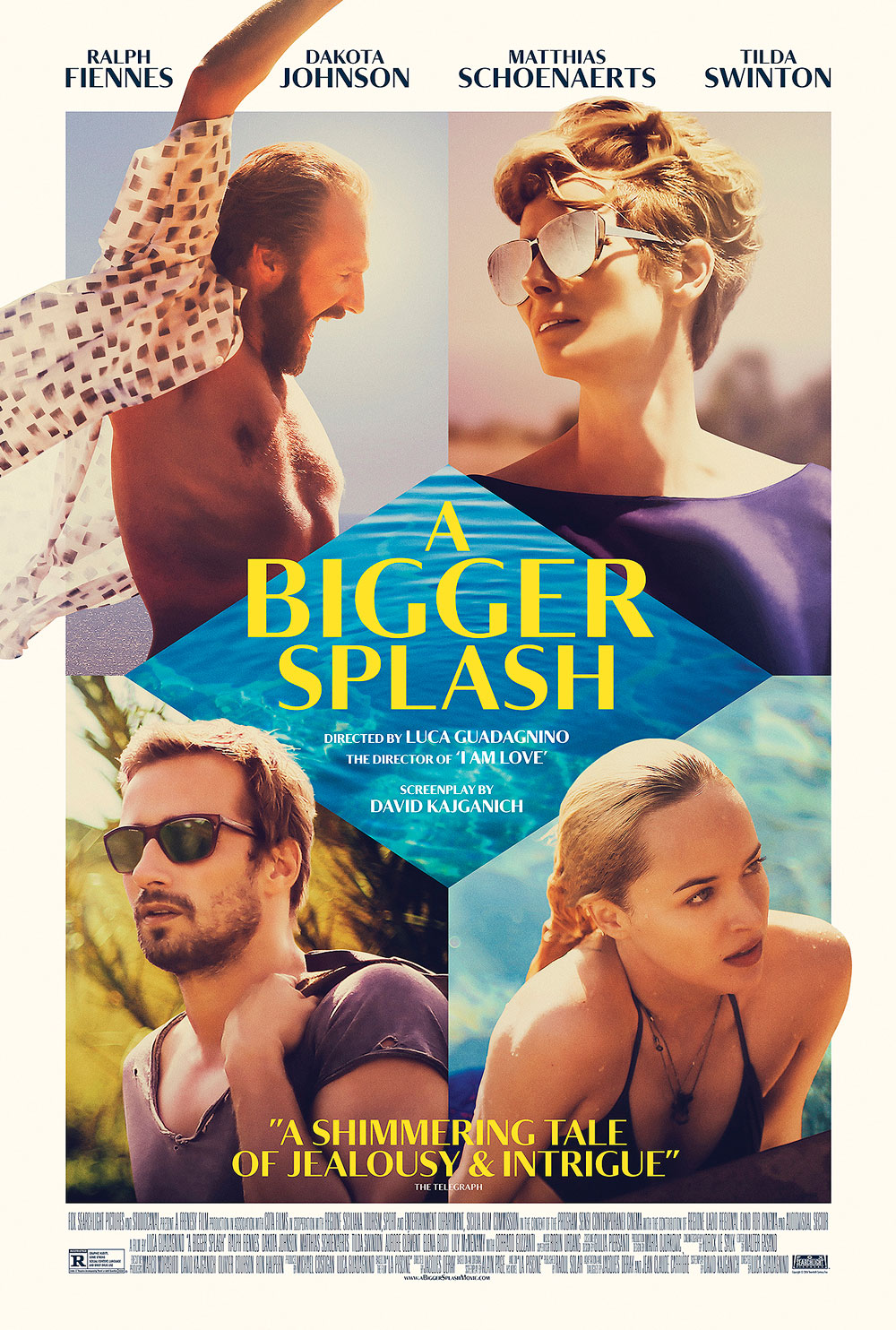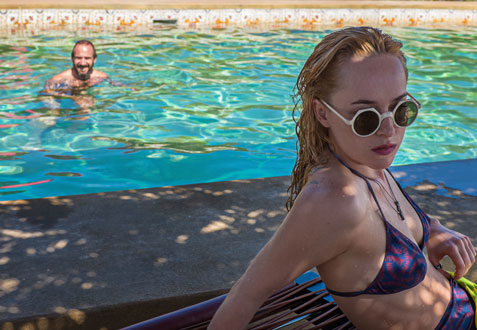Movie Review: “A Bigger Splash”

At first, “A Bigger Splash” is a feast for the senses. The gorgeous locations, thrilling tunes, and nothing but good times with Tilda Swinton’s rock star feels like paradise. Midway through director Luca Guadagono’s hypnotic film, however, the dream begins to turn into an equally exciting and unnerving nightmare.
Marianne Lane (Swinton), unlike her former lover Harry (Ralph Fiennes), is speechless. After the rock star undergoes a potentially career-ruining procedure, she seeks some peace and quiet with her boyfriend Paul (Matthias Schoenaerts). They lie about in the sun, make love any chance they get, and, at least on the surface, the two couldn’t look happier. Their brief moments of peace and quiet are interrupted when Harry stops by with his “daughter” Penelope (Dakota Johnson). Harry, Paul and Marianne all share a history together — one that slowly reveals itself over the course of the narrative.
Until the surprising but inevitable third act, that’s about as much plot as there is in “A Bigger Splash,” a film that’s driven far more by atmosphere and character. David Kajganich’s script may feel like a rambling assortment of scenes, but they’re all of a piece, always serving a purpose or revealing something about the characters. When Harry lets loose to some Rolling Stones in a joyful three-minute dance sequence, we see the man Marianne used to love. That man, the one that always tries to live his life to the fullest, comes and goes throughout the film, like all four of the central characters.
Nobody is what he or she appears to be. Guadagono and Kajganich slowly strip the characters down to their true selves, like when Penelope is peeling a piece of fruit. (The film is packed with subtle and sometimes comical visual metaphors.). All of the characters are deeply hurting, but none of them are smart enough to speak up about it, continuing to put on a happy face. Having Marianne stripped of her voice is an amusing touch for the story, because if any of the characters just decided to truly communicate, they wouldn’t explode in such a dramatic fashion like they do in the third act.
In one scene, Harry says that he doesn’t believe in “half-truths,” and yet he spends much of the film telling half-truths. None of the characters, with maybe one exception, are who they think they are. “A Bigger Splash” is as much about the past, if not more so, than it is about the present. Paul, for example, struggles deeply with his past, unsure if he’s still that same man. Harry, of course, loves his old self and wishes he could get back those days. And Marianne, as Harry says, has “reinvented” herself throughout her career, implying that, like Paul, she has often run from the past. In that instance, Harry was talking about her career, but very little should be taken at face value with this film.
In the characters’ greatest moments of honesty, Guadagono uses these intensely personal close-ups, letting us get as close to the characters as possible. These quiet, reflective moments create an illuminating dichotomy with the more aggressive camerawork, editing and sound choices. Like the characters, there’s a duality to the style and pacing of the film.
“A Bigger Splash” is a richly made and thoughtful character study, and one that’ll probably grow deeper with each viewing. There are both big and small setups and payoffs (including one involving the sound of a cellphone going off, funnily enough) that add up to an intimate and dense experience.
Related Posts
Posted in: Entertainment, Movie Reviews, Movies
Tags: Dakota Johnson, Ralph Fiennes, Tilda Swinton
















